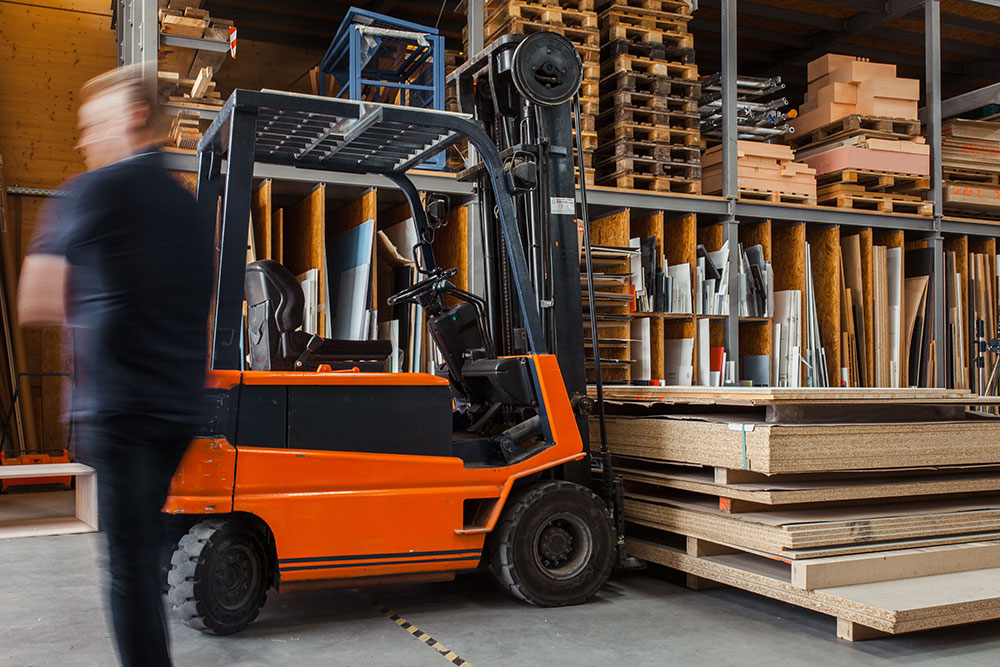VR Forklift Truck Training
VR offers a unique opportunity to immerse learners in realistic simulations of difficult or dangerous situations. For businesses, VR training can provide a cost-effective way to train large numbers of employees quickly and easily. VR forklift training is one area where VR is being used with great success.
Using a VR headset, trainees can be placed in a virtual warehouse to complete various tasks. The benefit of VR training is that it allows trainees to make mistakes in a safe environment. VR forklift training improves safety standards and reduces accidents. Here are four ways that VR education for forklift training can benefit your business:
Reduced training costs
Virtual reality (VR) training is an invaluable tool for any business looking to set up cost-effective and efficient training programs. Not only is it far cheaper than trying to replicate on-site methods, as there is no need to invest in specialised equipment or invest resources into maintaining dedicated facilities; VR also has numerous advantages over traditional methods.
With the added control of being in a virtual environment, businesses are able to give their employees the opportunity to learn and practice soft skills such as communication and teamwork, as well as onboarding new members of staff without the need for expensive, comprehensive training programmes.
Increased safety
In the past, forklift truck training has been conducted in real-world settings, which can be dangerous. With VR safety training, businesses can create a metaverse – a virtual world that replicates real-world conditions. This means that VR forklift truck training can be conducted in a controlled environment, without the risks of real-world settings.
This makes it ideal for businesses concerned about health and safety. VR forklift truck training also has other benefits. It can be used to train the VR workforce of the future, and to onboard new employees. VR safety training can also be used to teach soft skills, such as communication and collaboration.
Improved retention
VR-based training can be an immersive and engaging experience for learners, which helps to improve learner retention rates. Studies have shown that VR-based training can result in up to three times more information being retained than traditional methods such as lectures or textbooks.
VR group training can be a more enjoyable and effective way to learn compared to VR class training. VR tuition can also be provided by VR instructors who are more experienced and knowledgeable in the subject matter. VR-based training can thus help to improve learner retention rates and make learning more enjoyable and effective for all workers.
Greater flexibility
VR training can be delivered anytime, anywhere, making it ideal for busy employees who may not have time to attend face-to-face sessions. VR class training can be conducted with a group of employees at the same time, making it more cost-effective.
VR instructors can also deliver tailored content that is specific to the needs of each individual learner. As a result, VR forklift truck training provides a more flexible and scalable solution for businesses.
At 3D Walkabout, we specialise in creating VR renders and visualisations that are both awe-inspiring and informative. Contact us today to find out more about our VR services.
Summary: How can VR be used by Forklift truck training?
VR offers realistic simulations for forklift truck training, allowing learners to experience challenging scenarios in a safe and controlled virtual warehouse setting.
VR training provides a cost-effective solution for businesses by eliminating the need for specialized equipment and dedicated facilities while enabling soft skills development and efficient onboarding.
VR forklift training ensures safety by conducting training in a virtual metaverse, replicating real-world conditions without exposing trainees to physical risks, making it ideal for health and safety concerns.
VR-based training enhances learner retention rates by providing immersive and engaging experiences, resulting in higher information retention compared to traditional methods.
VR training offers flexibility in delivery, enabling anytime, anywhere access for busy employees and cost-effective group training with the potential for tailored content and scalability.
FAQs
Is VR training cost effective?
When it comes to training and education, virtual reality (VR) can be a cost-effective alternative to traditional classroom lectures. VR lets students experience a real-life scenario in a safe environment that’s not only more engaging but also more cost-efficient.
Is VR training good?
Virtual reality (VR) training is a great way to train employees. It can be used for training employees on how to use a specific piece of equipment or software, as well as teaching them how to perform their jobs in the real world. It’s also useful for educating employees on how to handle a new situation or scenario.
How virtual reality is used in training?
Virtual reality is used in training to simulate real-world situations. It can be used to train a variety of skills, from operating heavy machinery to flying an aeroplane. This is accomplished by using a headset that has built-in headphones, which allow the user to hear what’s going on around them. The headset also blocks out all other sounds.
How do you start virtual reality training?
The first step in virtual reality training is to decide what kind of experience you want to provide your employees with. Do you want them to have an immersive experience with 3D visuals? Do you want them to feel like they’re there? Or do you just want them to learn how different tools work?
What is virtual reality training?
Virtual reality (VR) training is a way to train employees using computer-generated environments that mimic real-world situations. These environments can be created with video game engines or 3D modelling software, and they can be used to simulate any number of scenarios.


